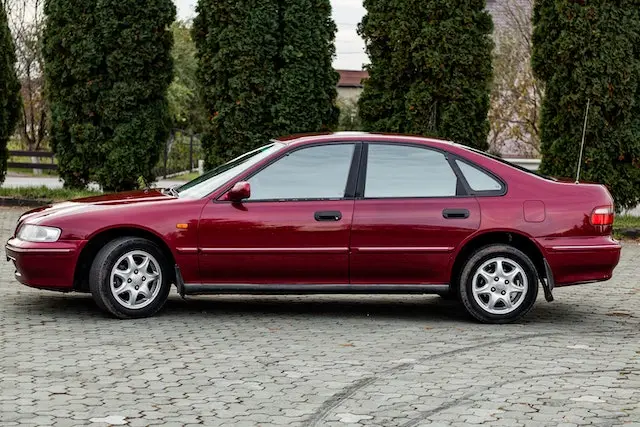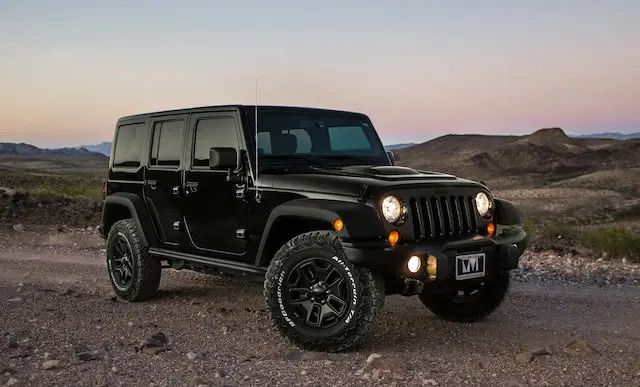Last updated on January 11th, 2024 at 05:00 pm

If you have ever come across a decision, whether to buy a low profile tire or a high-profile tire, then you indeed have an idea how complicated these choices can be, especially for those who don’t know what is the main difference between these two.
The low profile tire has a wider contact area with smaller sidewalls, which means a lower aspect ratio. On the other hand, a high-profile tire has narrow contact areas with bigger sidewalls, which means a higher aspect ratio.
Both of them are useful for different purposes. Sometimes, low profile tires are more favorable for a particular type of driving, and sometimes, high-profile tires. It all comes down to you, which type of driver you are, and what type of performance you desire.
Table of Contents
Low Profile Tire Pros & Cons
[i2pc show_title=”false” title=”Pros & Cons” show_button=”false” pros_title=”Pros” cons_title=”Cons” ][i2pros]Better traction and cornering
Responsive handling
Quick acceleration and brakes
Best for tracks[/i2pros][i2cons]Bad on potholes and damaged roads
Reduce tread life
Noisier[/i2cons][/i2pc]
High Profile Tire Pros & Cons
[i2pc show_title=”false” title=”Pros & Cons” show_button=”false” pros_title=”Pros” cons_title=”Cons” ][i2pros]Comfortable on rod ride
Low rolling resistance
Improves durability
Protect car suspensions and wheels[/i2pros][i2cons]Not so responsive handling
High rolling resistance
Slow brakes and acceleration[/i2cons][/i2pc]
Price and durability
The durability factor straight-up goes in favor of high-profile tires. Low profile tires wear off very quickly, sometimes faster than the average life of the tire. The main reason for that is their less rubber compound. Contrary to that, high-profile tires run for more miles and are more reliable over potholes and nails that easily puncture low-profile tires.
The pricing perspective totally depends on the manufacturer of the tire. The Michelin and Pirelli low profile tires might be more expensive than Kumho’s high-profile tires. However, due to the low rolling resistance, low profile tires improve the gas mileage, which is totally opposite to high-profile tires. However, the high-priced tire has more durable treadwear, so it’s very hard to judge which one is more affordable and reliable; the main factor in choosing these tires is totally based on their performance.
How to pick the right option
If you have a sports car, or even if you don’t, but you want a sporty ride on tracks, then low-profiling tires will be the right option for you. Low profile tires give your car a sportier look with better cornering and performance on the road. However, you always have to be prepared for less durable tire life and a fear of damaging wheels. Due to the low profiling and smaller sidewalls, the rubber is not big enough to handle big bumps and potholes.
On the other hand, if you have a big vehicle, mostly driven off-road (Mud terrains, rally), then a high-profile tire will be a better shift for you. With high sidewalls, these tires are excellent for bumpy roads. High-profile tires are also good for everyday normal driving because they provide more comfortable rides. Although high-profiling tires are more durable, they might not give you the sporty handling or cornering as low-profiling tires on tracks.
When to use and not to use
The high-profiling tires are very good for off-roading and larger vehicles. They protect the rims and provide comfortable and safer rides. However, driving them on tracks with sports cars is not the best decision that you could make. Because the narrow contact area of these tires is not proven to deliver grip and cornering.
On the other hand, the low profile tires are perfect for tracks with sports cars. Due to their wider tread, the tire provides very smooth cornering on fast tracks, with proper handling and brakes. However, driving them off-road is not a sensible decision. Even low profile tires are not strong enough to manage small potholes on the road. The smaller sidewall can not handle the road force and causes damage to the wheels and suspension of the car.
Which one is better for on road

For on-road driving, both low profile tires and high-profile tires are fine, depending on the situation. If the road is smooth without any bumps and damages, then a low profile tire will work. However, if the road is damaged, low profile tires won’t be a good choice; high-profile tires will provide a proper ride.
Which one is better for off-road

A low profile tire for off-roading is never a good option. Due to their smaller sidewalls, they can not handle the harsh conditions of the terrain. On the other hand, high-profile tires are perfect for off-road rides. The bigger sidewalls control the damage while providing a comfortable and smooth ride in mud and all-terrain conditions.
Final words
Both of these tire variations are good in their specific routes. For daily on-road drivers like me, doesn’t require any modification on tires; the best is how the tire comes at default. However, if you are after aesthetics, fast rides, or wild rides, then you can customize your tire profile based on your conditions. Just make sure you choose the right way to customize them because choosing the wrong dimensions can hurt your tires and car as well.